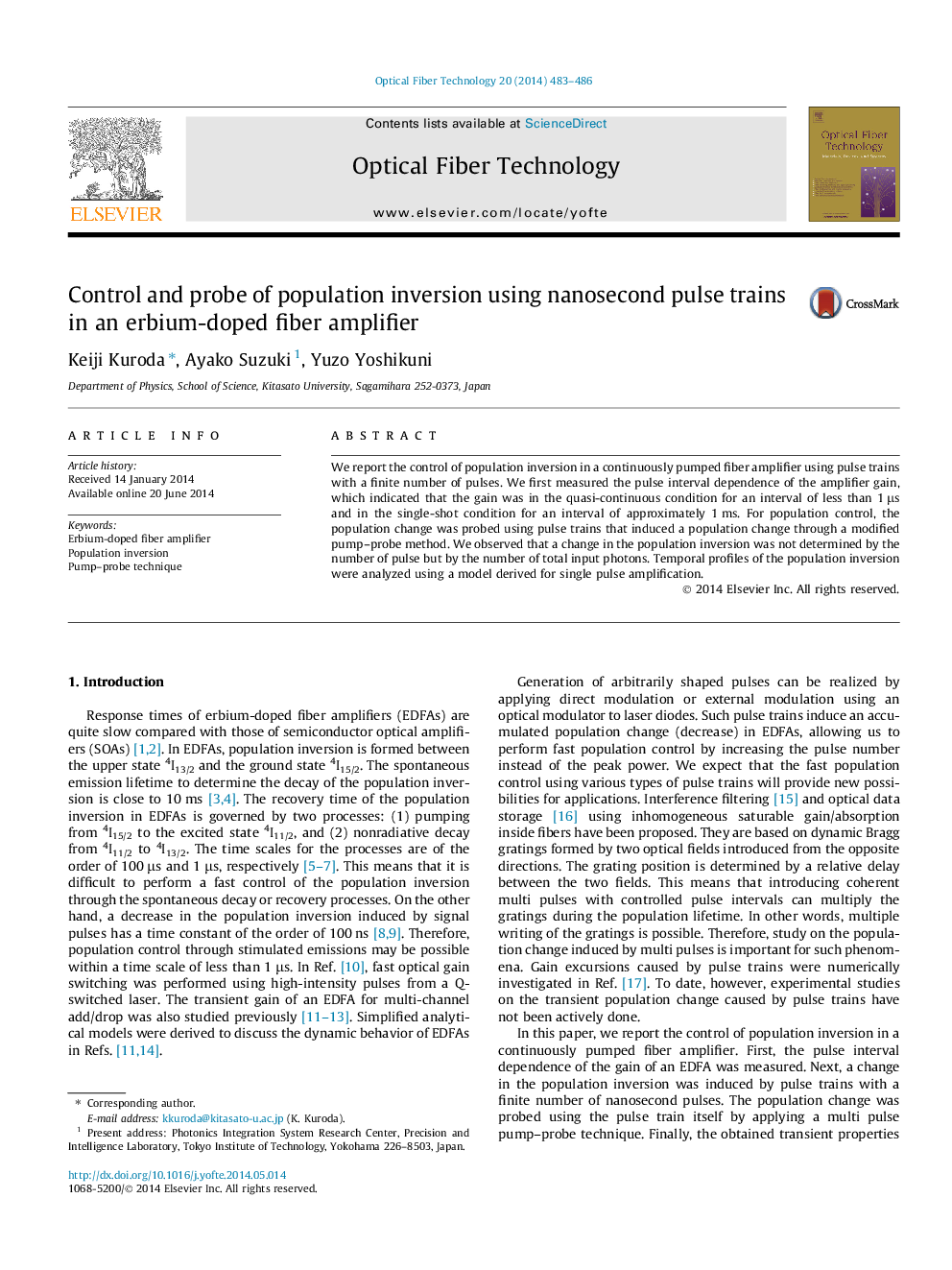| Article ID | Journal | Published Year | Pages | File Type |
|---|---|---|---|---|
| 462391 | Optical Fiber Technology | 2014 | 4 Pages |
•Control of population inversion in a fiber amplifier using pulse trains is reported.•The population change was probed using a modified pump–probe method.•Change in the population inversion is determined by the number of total input photons.•Temporal profiles of the population inversion are analyzed using a theoretical model.
We report the control of population inversion in a continuously pumped fiber amplifier using pulse trains with a finite number of pulses. We first measured the pulse interval dependence of the amplifier gain, which indicated that the gain was in the quasi-continuous condition for an interval of less than 1 μs and in the single-shot condition for an interval of approximately 1 ms. For population control, the population change was probed using pulse trains that induced a population change through a modified pump–probe method. We observed that a change in the population inversion was not determined by the number of pulse but by the number of total input photons. Temporal profiles of the population inversion were analyzed using a model derived for single pulse amplification.
